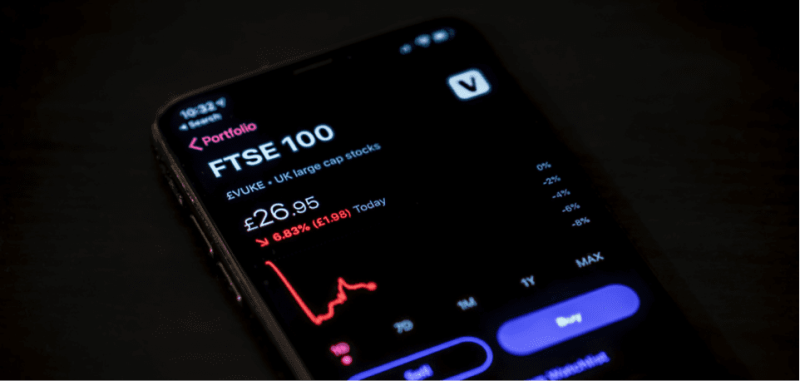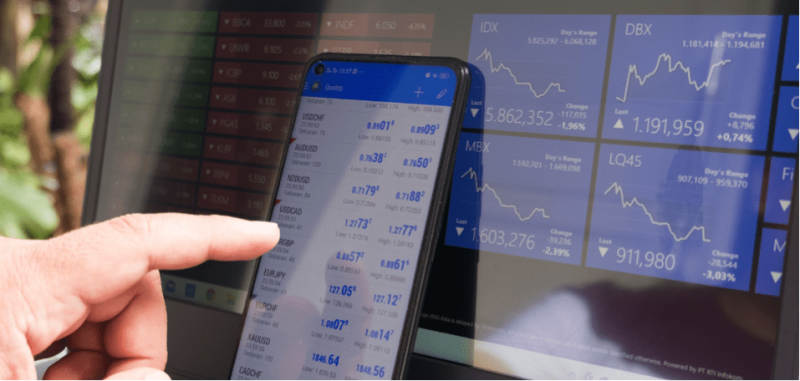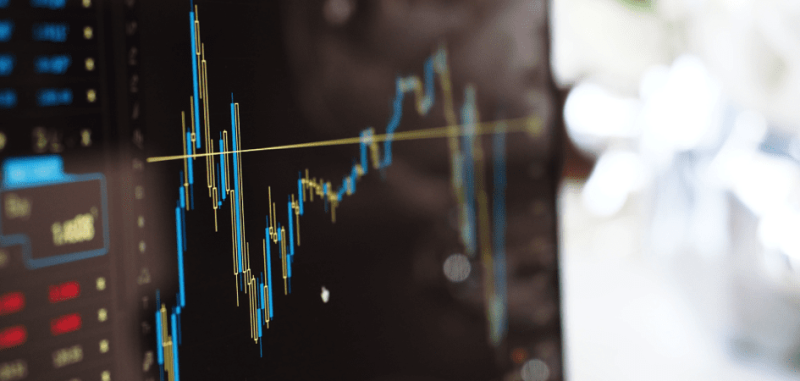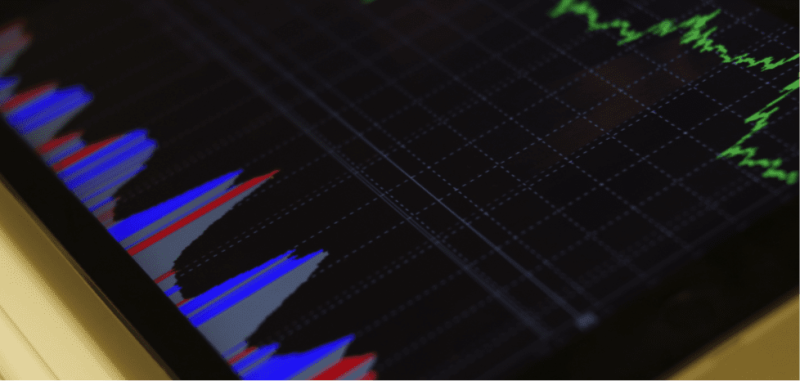When Trading stock on a brokerage account, there exists a wide array of stock order types you can use. Some of these order types get executed by the broker immediately, while others only get executed at a certain level (be it a specific time or market price level.)
It’s therefore highly essential that every trader familiarizes themselves with the most popular types of stock orders and learns the different ways they can put them to good use. In this beginner’s guide, I’ll give you a starting point by walking you through one of the most popular orders: the stop market order.
By the end of the guide, you should have a good sense of what’s right for you and feel confident placing future trades using his order. I’ll also briefly mention the other types of trading orders to give you a foundational level of understanding before you decide to delve further into the subjects.
Also Read: Trailing Stop Limits: Maximizing Your Profits While Limiting Your Losses
Contents
- How Do Stock Orders Function?
- What is a Stop Market Order?
- Difference Between a Market Order and a Stop Market Order
- The Importance of Stop Orders
- Where To Place A Stop Market Order When Short Selling
- Where To Place A Stop Market Order When Buying
- Alternative Points To Place Stop Market Orders
- Final Word
How Do Stock Orders Function?

In any financial market, an order is an instruction that you, the trader, give to a trading platform or the stock broker to sell or buy a particular security, like stock, at a specific market price range or time. You’ll lay out all these instructions and time or price limitations as you place a stock trade.
What is a Stop Market Order?
Stop orders are a versatile type of order you can use to get in and out of your trades. When you place a stop-market order, you’re telling your broker that you want to sell or buy when the market stock price hits your set value.
It’s basically a stop-loss order that you’ll mainly use to protect your short or long position after entering a trade. And once the current market price level hits your set stop price, it turns into a market order that your broker will execute at the next available price.
So, as an example, let’s say you long the XYZ stock at a current market price of $120, and you’d like to protect your position in case the price begins to drop. In that case, you’ll need to place a stop market order to sell when the market price hits your stop price, say $119.
Note, however: if you’ve set your stop order at $119 for the XYZ stock, but no one is willing to buy at that level, your stop loss market order won’t close out your position right away. If the nearest person willing to buy the stock has their buy order at $118, then your stop market order will seek them out and close out your position at that level.
The example above has demonstrated one of the biggest downsides of stop orders. You were expecting to lose a single dollar per share but have instead lost two. That’s called “slippage,” but fret not because it’s a common issue with all kinds of market orders.
Difference Between a Market Order and a Stop Market Order

A market order, easily the most straightforward trading tool, executes trades right away at the current market price. A market order allows you to sell or buy a stock at the best available price. The downside of this tool is that it limits your control over the price at which you sell or buy a token.
A stop market order, however, executes at a future stop price that you’ve decided.
The Importance of Stop Orders
As a trader, your trading capital is your lifeline, and you must protect every cent of it. The best way to do that is to determine, as fast as possible, where your profit target and stop-loss levels will be. As a general rule, you want every trade to provide you an entry with the highest probability of winning money, as well as a specific and strategic point that’ll limit your losses: this is where stop market orders come into play.
Stop orders keep losses from lousy trading decisions at manageable levels while simultaneously remaining sufficiently flexible to give winning trades the room they need to grow.
What Other Types of Order Types Are There?
Additional types of orders you’ll need to learn about include limit orders and market orders.
Buy limit orders are orders to buy a stock once it hits a specific execution price, while a sell limit order is an order to sell a stock when a specified price is available.
A hybrid of limit orders and stop orders also exists, and it’s called a stop-limit order. These combine stop limit orders with limit orders, where you enter both a limit price and a stop price.
Why Are There So Many Order Types?
Brokers offer a wide range of order types to award traders the flexibility they need to mitigate risks and customize their trades. Using the proper trade order will help you rest assured that your trades will be executed or altered at your intended levels promptly.
Better yet, other orders, like trailing stop orders, can help you maximize your returns in the market without exposing you to additional risk.
How You Can Use Stop Market Orders For Different Situations
Like with all other orders, where and when you use a stop market order can make a massive difference in the profits or losses you end up with. Think of stop orders as a discrete tool suited for different purposes in the market.
Here are ways to place a stop order, depending on whether you’re buying or selling a stock.
Where To Place A Stop Market Order When Short Selling

A stop-loss order on short sells shouldn’t be placed at random levels. In whatever financial market scenario, the best place to place your stop loss should be a level that gives room for current market price fluctuation but will get you out of your position as soon as the price starts turning against you.
As such, with short selling, a common stop market order goes slightly above the most recent swing high. Just like you expect the market to find support at bottoms on swing lows, swing highs represent levels where the market will encounter resistance if it tries an upward move. A break beyond these levels usually signifies the beginning of an upward trend, and that’s why we’re placing our stop orders above said levels.
Plus, you want to trade with the trend, and when looking for short trades, the swing highs on the market should also be moving down.
I also feel like I should address a theory that any experienced trader, including myself, subscribes to. Ever heard of stop-loss hunts?
Every time you place a trade, the order is transparent to your broker. A game that most market makers play (nowadays, it’ll be a computer algorithm) is “taking out stops.” This is where the stock price is forced high or low enough to trigger vast numbers of stop-loss orders. These stop losses are usually around well-known resistance and support levels.
Immediately after taking out these stops, the stock then reverses its direction and rallies. That’s why every trader is advised against placing a hard stop level inside a key technical level. You always want to give some offset. This way, anytime market makers try running the “taking out stops” game, you can rest assured you won’t be one of those caught in the swings.
Also Read: What is Short Selling: Profit Making Strategy?
Where To Place A Stop Market Order When Buying

Just like when you’re short selling a stock, a stop loss order on a buy trade shouldn’t be placed at random levels. Again, you want to give the market sufficient wiggle room for fluctuation while simultaneously protecting yourself from a loss.
With that in mind, one of the simplest methods for placing a stop-loss order when buying is to find the most recent swing low and place it there. Swing lows occur when prices fall and then bounce.
They signify that the current market price found support at that level, and since you’re looking for a move up, a break of this “swing low” indicates that the uptrend has failed. As you buy, as opposed to short-selling, you want to see the swing lows moving up as well.
Alternative Points To Place Stop Market Orders

Needless to say, none of the levels I’ve recommended above are hard and fast rules. You do not need to place stop loss orders above swing highs every time you’re shorting, nor should you have to place one below swing lows when buying. Depending on your strategy and the entry price, you may place them at alternative positions on the price chart.
For instance, if you also tend to use technical indicators, let them help you determine the stop loss level. If one of the indicators provides you with a “go long” signal (or a buy signal), simply place a stop-loss order at the price level the indicators start signaling that it’s no longer wise to go long.
Volatility is the other standard tool that even the most seasoned traders use to determine stop-loss levels. Take the Average True Range (ATR), for instance. The indicator gives traders indications of how much the current market price is likely to move over time.
That implies you can use the ATR indicator to set a stop loss outside of normal fluctuations based on its volatility indications. If using the ATR indicator isn’t an option, measuring the typical price swings on a given day is another way to achieve the same.
Final Word
Day trading is a rewarding profession that can be immensely profitable, but only if you do your homework and make the right, educated decisions. With that in mind, learning the basics of trading before you risk your hard-earned money in the market is a must, and one of the first things you’ll need to learn is the different types of orders available and the things that set them apart.
Now that you’ve learned what a stop market order is, I hope you’re a better-equipped trader than you were before reading the guide. There are more types of orders, but this one is arguably the most common and a must-use. Never commit the unspeakable sin of not setting and respecting stop market orders.



